Do you have a question about the Toyota 2001 Camry and is the answer not in the manual?
Provides a general overview of the instruments and controls in the vehicle.
Identifies components of the vehicle's dashboard layout.
Explains the meaning of various warning and indicator lights.
Information on vehicle keys, doors, power windows, trunk, and hood operation.
Explains operation of power windows, including auto and key-off functions.
Information on setting and using the vehicle's anti-theft system.
Covers adjustments and safety for seats, belts, steering, and mirrors.
Explains the importance and proper use of seat belts for safety.
Details the SRS airbag system, its operation, and safety precautions.
Guidelines for properly installing and using child restraint systems.
Operation of headlights, turn signals, wipers, washers, and defoggers.
Instructions for operating headlights, high beams, and turn signals.
How to operate the windshield wipers and washer system.
Explanation of dashboard gauges, meters, and service reminder systems.
Interpretation of various dashboard warning lights and buzzers.
Operation of ignition, transmission, and parking brake systems.
Explains the selector lever positions and shift lock system.
How to operate and use the vehicle's cruise control system.
Information on the vehicle's car audio system, including types and operation.
Basic operation of the car audio system, including controls and functions.
Operation and controls for the manual and automatic air conditioning systems.
Controls and operation of the manual climate control system.
Controls and operation of the automatic climate control system.
Details on various other vehicle equipment and controls.
Explanation of the traction control system and its indicators.
Specifies the required unleaded gasoline type and octane rating.
Specifies the required unleaded gasoline type and octane rating.
Details the tandem master cylinder brake system and its components.
Explains the ABS function, its operation, and precautions.
Pre-drive checks including seat adjustment and door locking.
Importance of correct engine coolant for cold weather operation.
Basic checks to perform when the vehicle fails to start.
Essential safety measures and guidelines for towing vehicles.
Safety warnings to follow when jacking up the vehicle for tire changes.
Identifies common factors that lead to vehicle corrosion.
Guidance on polishing and waxing the vehicle for finish preservation.
How to clean and maintain vinyl interior surfaces.
Routine checks for vehicle operation and upkeep.
Warnings about continuing to drive with unchecked vehicle issues.
Introduction to DIY maintenance procedures and safety.
Diagram and identification of key components in the engine bay.
General safety guidelines for performing DIY vehicle maintenance.
Procedures for checking and maintaining engine and chassis components.
Procedure for checking and maintaining the engine oil level.
Importance and procedure for checking tire pressure.
Maintenance procedures for vehicle electrical components.
Precautions and steps for checking the vehicle battery's condition.
How to check and replace blown fuses in the vehicle.
Vehicle dimensions including overall length, width, and weight.
Recommended fuel type and octane rating for the vehicle.
Specifies the required unleaded gasoline type and octane rating.
Recommended tire sizes and inflation pressures for various loads.
Diagram of fuse locations within the engine compartment.
Contact information for reporting vehicle safety defects to NHTSA.
Explanation of DOT tire quality grading system for treadwear, traction, and temperature.
Provides a general overview of the instruments and controls in the vehicle.
Identifies components of the vehicle's dashboard layout.
Explains the meaning of various warning and indicator lights.
Information on vehicle keys, doors, power windows, trunk, and hood operation.
Explains operation of power windows, including auto and key-off functions.
Information on setting and using the vehicle's anti-theft system.
Covers adjustments and safety for seats, belts, steering, and mirrors.
Explains the importance and proper use of seat belts for safety.
Details the SRS airbag system, its operation, and safety precautions.
Guidelines for properly installing and using child restraint systems.
Operation of headlights, turn signals, wipers, washers, and defoggers.
Instructions for operating headlights, high beams, and turn signals.
How to operate the windshield wipers and washer system.
Explanation of dashboard gauges, meters, and service reminder systems.
Interpretation of various dashboard warning lights and buzzers.
Operation of ignition, transmission, and parking brake systems.
Explains the selector lever positions and shift lock system.
How to operate and use the vehicle's cruise control system.
Information on the vehicle's car audio system, including types and operation.
Basic operation of the car audio system, including controls and functions.
Operation and controls for the manual and automatic air conditioning systems.
Controls and operation of the manual climate control system.
Controls and operation of the automatic climate control system.
Details on various other vehicle equipment and controls.
Explanation of the traction control system and its indicators.
Specifies the required unleaded gasoline type and octane rating.
Specifies the required unleaded gasoline type and octane rating.
Details the tandem master cylinder brake system and its components.
Explains the ABS function, its operation, and precautions.
Pre-drive checks including seat adjustment and door locking.
Importance of correct engine coolant for cold weather operation.
Basic checks to perform when the vehicle fails to start.
Essential safety measures and guidelines for towing vehicles.
Safety warnings to follow when jacking up the vehicle for tire changes.
Identifies common factors that lead to vehicle corrosion.
Guidance on polishing and waxing the vehicle for finish preservation.
How to clean and maintain vinyl interior surfaces.
Routine checks for vehicle operation and upkeep.
Warnings about continuing to drive with unchecked vehicle issues.
Introduction to DIY maintenance procedures and safety.
Diagram and identification of key components in the engine bay.
General safety guidelines for performing DIY vehicle maintenance.
Procedures for checking and maintaining engine and chassis components.
Procedure for checking and maintaining the engine oil level.
Importance and procedure for checking tire pressure.
Maintenance procedures for vehicle electrical components.
Precautions and steps for checking the vehicle battery's condition.
How to check and replace blown fuses in the vehicle.
Vehicle dimensions including overall length, width, and weight.
Recommended fuel type and octane rating for the vehicle.
Specifies the required unleaded gasoline type and octane rating.
Recommended tire sizes and inflation pressures for various loads.
Diagram of fuse locations within the engine compartment.
Contact information for reporting vehicle safety defects to NHTSA.
Explanation of DOT tire quality grading system for treadwear, traction, and temperature.
| Brand | Toyota |
|---|---|
| Model | 2001 Camry |
| Category | Automobile |
| Language | English |
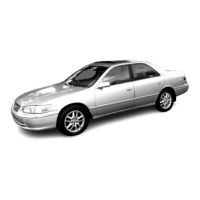
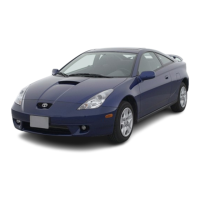
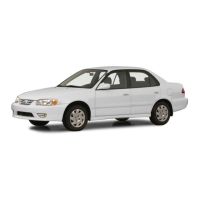
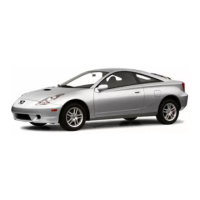

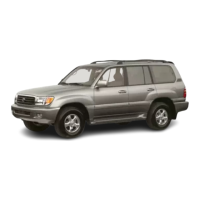
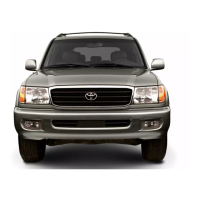


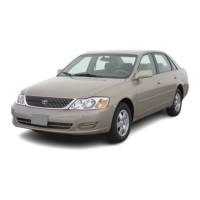

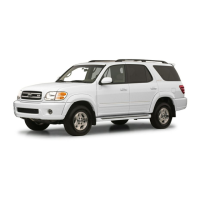
